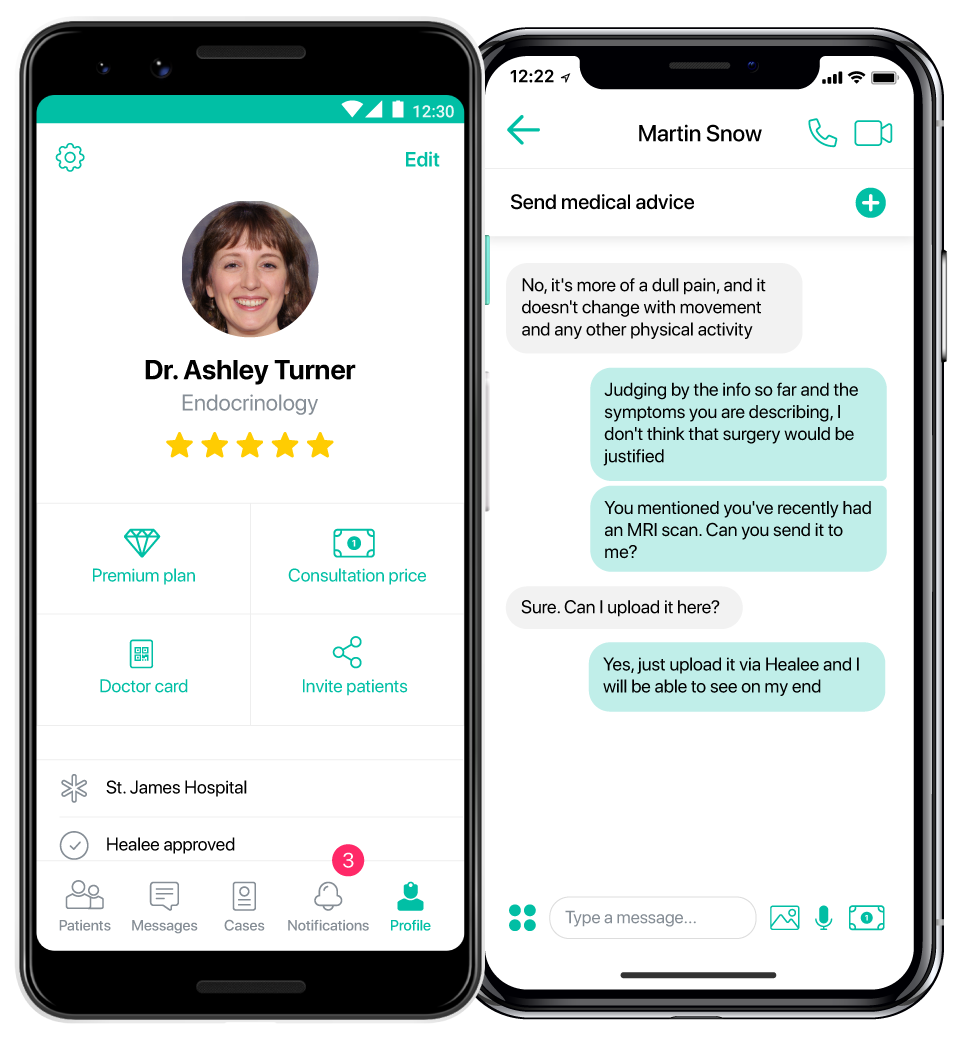Why telehealth?
Are you a patient? Download Healee for patientsWhat is telehealth?
Telehealth is a novel term, largely unfamiliar to most people. However, the concept behind the term is quite straightforward and feels rather natural to a population that relies on smartphones for almost anything.
Telehealth simply means the ability for patients to talk to doctors remotely, via a connected device – computer, tablet or smartphone. In fact, this is something most of us have been doing for years now, be it via the phone, email, or with the help of online forums. However, more advanced, dedicated platforms (such as Healee) provide a much better experience – both for the patients and their care providers, leading to an improved overall service.
In fact, telehealth is a natural development, which brings along quite a few benefits.
Telehealth is convenient
Dedicated telehealth platforms have the advantage of learning from decades of software development. Modern apps step on user experience paradigms ranging from instant messengers, social media, email clients and even phone (VoIP) apps. What this means is that apps like Healee are as easy to use as Facebook or Skype – patients can simply pick up their smartphone and contact a doctor in seconds. Only they come with the added benefit of health-specific functionalities, such as the ability to attach items from the patient's electronic health record to the consultation.
Telehealth is accessible
Picking up a smartphone is much easier than driving to a brick-and-mortar healthcare facility, hands down. In fact, although it may appear an insignificant change, the move from physical to virtual presence turns out to be extremely fundamental; the sheer fact that the actual medical focus is shifted from the physical visit to the initial virtual contact makes it much easier for patients seeking medical help for situations which otherwise would have remained unsolved. It’s simply more efficient.
Immediate assessment
Once a patient gets to the doctor’s office, they usually have to spend some time in the waiting room. In fact, the time from experiencing an issue to getting a primary diagnosis is quite long, and has been getting longer by the year. This is usually due to disparities between different geographic areas; specialists in certain regions may be in high demand, while their colleagues in others may find themselves without patients. Telehealth solves this problem by erasing the geographical distance factor, effectively leveling the field. Research shows that time between reporting a problem and receiving an initial consultation has been decreased to sheer minutes!
Improved triage
Often, initial visits with a general practitioner are required, before a patients is forwarded to a specialist. This, again, increases the time between experiencing an issue and the diagnosis. Telehealth apps allows a patient to quickly go through an initial assessment, after which he or she can quickly be forwarded to a particular specialist, eliminating idle time in waiting rooms along the way.
Telehealth provides better access to specialty care
While some locations may experience relative saturation of various medical specialists, there are well-documented deficits in many other areas. Telehealth services help to address this issue by providing a much needed access to specialty care, even if the specialists are thousands of kilometers away. This is a welcome development for millions of people in need of qualified medical assistance.
Superior chronic disease management
Patients with chronic diseases follow a strict schedule: they must report to their doctor once a month, twice per season or three times per year; they need to follow a strict regimen; they have to undergo recurring tests; etc. Telehealth services provide a chance to improve the doctors’ ability to monitor their patients more closely and more frequently, while giving patients a much needed facilitation in their communication with their care provider. Just imagine how easy it is for the patient to quickly send a snippet from their electronic health record to the doctor, within a single application, and attach a short message! It is equally as simple for the doctor to check his or her inbox and reply to the patient's message in due time – all without having to schedule in-house appointments.
Doctors and patients - one language
Telehealth sure sounds like a good idea! As long as the patient and doctor can communicate efficiently. This is where Healee does things differently: What we aim to do is provide the opportunity for the patient to connect with medical professionals who speak their preferred language. We believe that the doctor-patient communication is best when patients are confident that they will be understood. What better guarantee for rapport than a common background?
This is just the beginning
As you can see, telehealth is a natural advancement – a symbiosis between healthcare and modern communications. In fact, this is just the start of a very productive and beneficial development. As technology moves forward, services that go along with telehealth will become better and more numerous: from remote diagnostics, to remote surgery, evolution has already begun.
